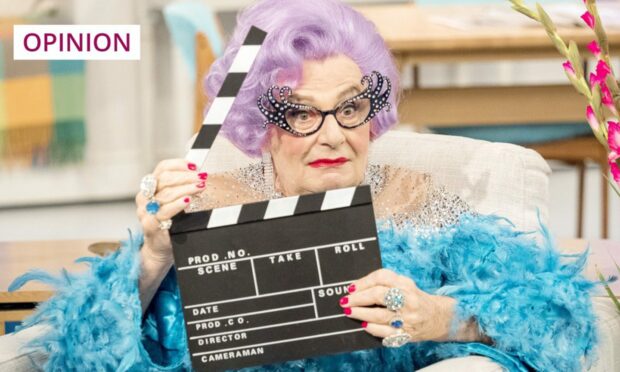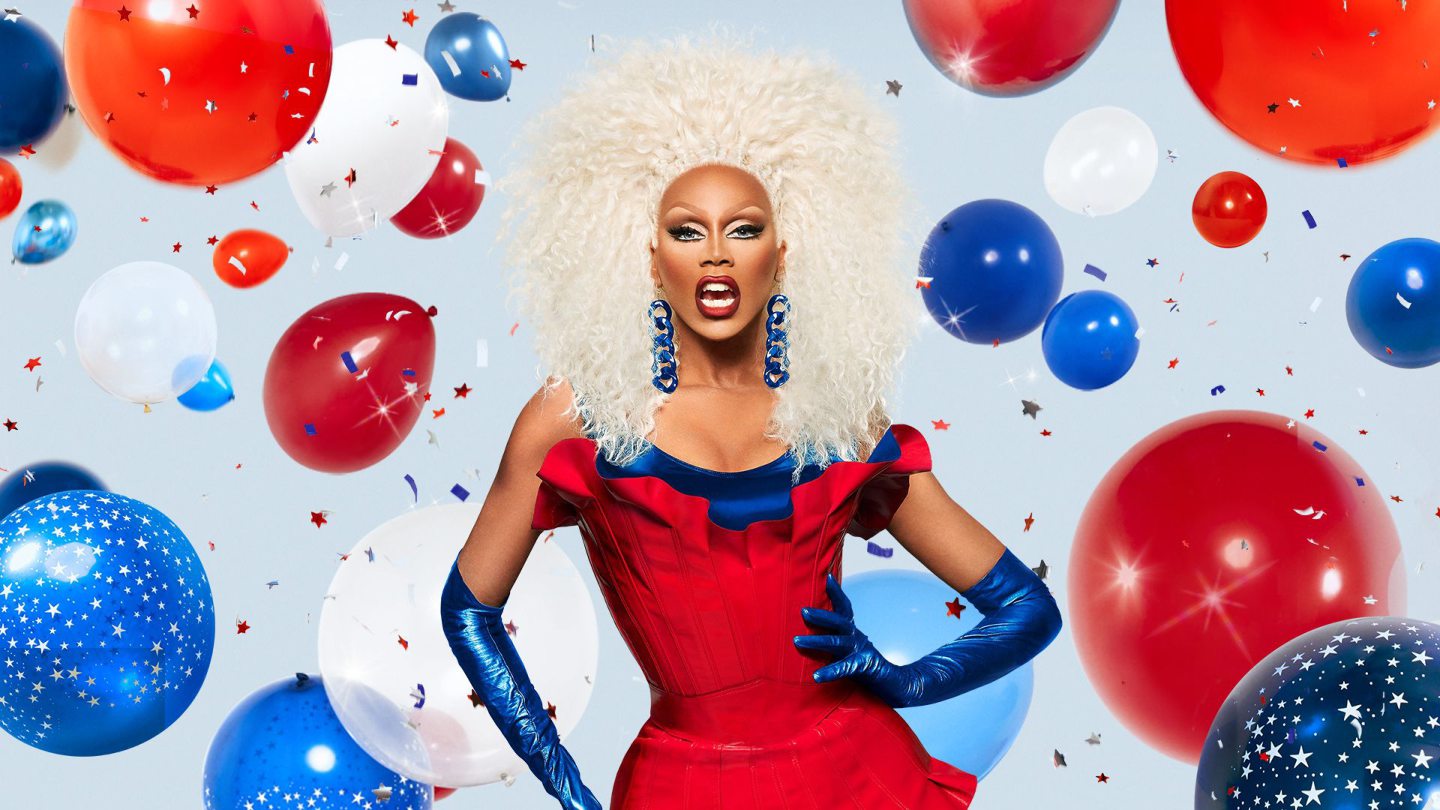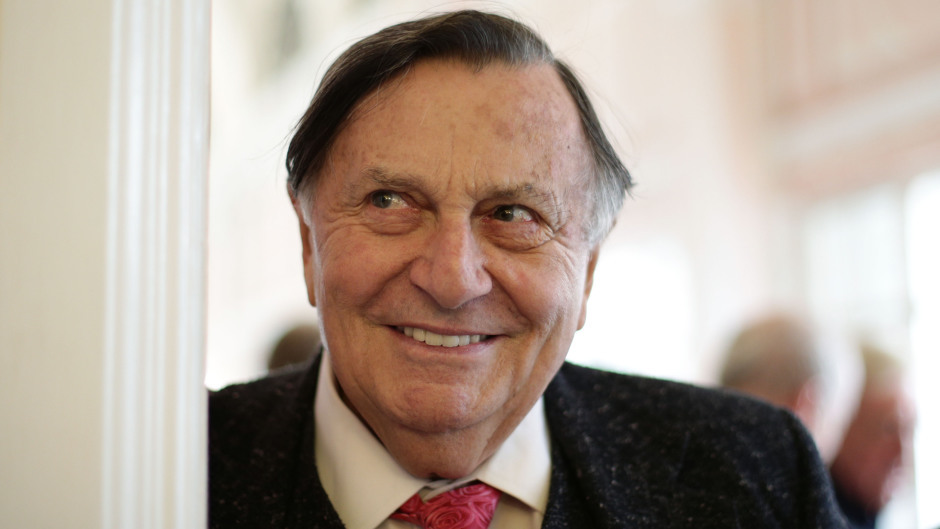When he was 76, Barry Humphries told me he thought he was suffering from early stage dementia; a little nugget that he insisted wasn’t a joke.
But it clearly was, unless his was the slowest decline in the history of dementia, given that he died last week, aged 89, with as incisive a mind as ever.
I’d opted to interview Humphries, not his alter ego, Dame Edna Everage, but it was certainly a battle to identify the seams between the two. Humphries’s inquisitiveness involved interviewing his interviewer, a sometimes hilariously unnerving tactic.
“Have you got children?” he asked. Yes. He reached for his coffee cup at this disclosure, his voice dropping conspiratorially. “Do you know the father?” he asked.
Recent farewells to Paul O’Grady and Barry Humphries have been a reminder of how much the politics of drag has changed between the births and deaths of Lily Savage and Edna Everage.
The two women were used by their creators as waspish social commentators: Lily the mouthy, brassy, working class prostitute; Edna the epitome of snobbish, Australian suburbia, based loosely, Humphries admitted, on his own mother.

But drag – with the help of RuPaul’s Drag Race – has become an increasingly politicised entertainment. Lily, in particular, became a flag-flyer for the LGBTQ community.
Yet, drag highlights the current public confusion about the politics of social and sexual identity. Criticism comes from both social conservatives and social liberals.
Last week, American singer Lizzo invited drag queens on stage in defiance of a new law in the southern state of Tennessee which banned drag in public or in front of children. The irony whizzed past the southern rednecks’ heads like a bullet: they considered a man in a frock more of a threat to children than a Kalashnikov in the cupboard.
But what IS drag? A challenge to gender stereotypes – or another promulgation of tired clichés about women?
When Olympic swimmer Sharron Davies tweeted in 2019 that she was tired of women being parodied, she likened drag to blackface, a claim dismissed by an American professor of gender studies, Dr Nishant Upadhyay. Upadhyay – who uses the pronoun they – said: “It is completely unacceptable to compare drag with blackface. Drag is an exploration of gender, while blackface is rooted in violent histories of anti-blackness.”
Blackface, they insisted, was used “to stereotype, ridicule and ostracise black communities… It is an assertion of racial power over black folks, whereas drag is a challenge to patriarchy.”
Are they kidding? Blackface is used to stereotype and ridicule, but drag isn’t?
Drag is not so much an ‘exploration of gender’ as a send-up of femininity
Drag can be funny. As Edna Everage pointed out to Jeffrey Archer, you have to learn to laugh at yourself, or you might miss the joke of the century. But drag is not so much an “exploration of gender” as a send-up of femininity: big hair, big bust, bejewelled and sexually provocative. (Lily is not a prostitute by accident.)
Men in drag have a power that the women they mimic don’t. Just as Diane Abbott did recently, Upadhyay risks creating a hierarchy of prejudice in which their own experience is most important.
Interestingly, the politics of drag conflict with current social mores about “cultural appropriation”. Adopting a persona that you don’t personally “own” at birth is outlawed.
Meanwhile, heterosexual actors, it has been suggested, shouldn’t play gay roles – though nobody seems to bother if they grew up in a mansion and play a working class coal miner
The singer, Adele, for example, was criticised for tying her hair in Bantu knots. Meanwhile, heterosexual actors, it has been suggested, shouldn’t play gay roles – though nobody seems to bother if they grew up in a mansion and play a working class coal miner. And why should they? The very essence of acting is adopting an identity other than your own.
Actor Eddie Redmayne’s assertion that he should never have played Lili Elbe because he is not personally trans is baffling when examined in the context of drag. Why is it acceptable to “adopt” a gender in one form of entertainment but not another? Or to be a man and wear another gender’s clothes, but not a woman and wear another culture’s hairstyle?
More innovative character actor than drag artist
This unnecessary confusion seems to make drag acceptable if you are non-binary, but not if you are heterosexual. Barry Humphries was condemned for his views after he said transgenderism was “a fashion” – though he later claimed he was misrepresented.
“It’s so much easier to shock people these days,” he said. “I find it extremely provocative… to find myself in a society that is so prudish when it thinks it’s being liberal. It’s ridiculous.”
In truth, Humphries was more innovative character actor than drag artist – and why not? Sauce for the non-binary goose is sauce for the heterosexual gander.
Edna made political points – about the Mexican underclass in America, for example – which made her more than the puppet of a “female impersonator”, as drag artists were once called.
Anyway, gender is not the only thing to define a person. I confessed my confusion to Humphries as I left. Barry… Edna… I wasn’t sure exactly who had turned up. “No,” he smiled, “but SOMEBODY did.”
Catherine Deveney is an award-winning investigative journalist, novelist and television presenter, and Scottish Newspaper Columnist of the Year 2022













Conversation